Comprehensive Guide to Carbide Rock Chisels
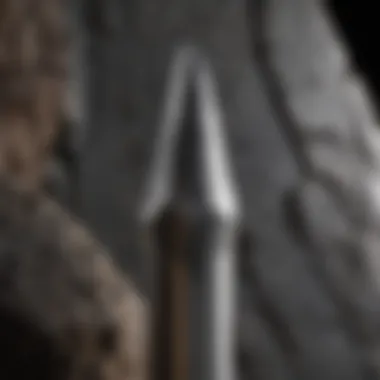

Intro
Carbide rock chisels hold a unique position in both geological exploration and fossil collection. With their exceptional strength and durability, these tools have become indispensable for professionals and enthusiasts alike. Understanding their composition, applications, and best practices is essential for anyone engaged in the disciplines of geology or paleontology.
This article will serve as a comprehensive examination of carbide rock chisels. We will discuss their benefits over traditional materials, explore cutting-edge safety considerations, and examine advancements in chiseling technology. Our aim is to provide a detailed resource that caters to both seasoned collectors and those new to the world of rock and fossil excavation.
Featured Collectible of the Month
Overview
This section highlights a particular carbide rock chisel that stands out due to its design and functionality. Specifically, the Carbide Tip Chisel is a remarkable tool that showcases the strength of carbide materials in rock chisel manufacturing. This type of chisel features a hardened carbide tip that enhances its ability to penetrate tough rock formations, greatly improving efficiency during excavation tasks.
Historical Significance
The evolution of the carbide rock chisel is tied closely to advancements in mining and geology. Initially, chisels were crafted from softer metals, which limited their use in demanding environments. The introduction of carbide in the early 20th century revolutionized the tool's efficiency and longevity. Today, these chisels are widely used in various industries, including construction, mining, and paleontology.
"Carbide technology has transformed the way collectors and geologists engage with the earth's materials, enabling more precise and effective excavation methods."
Identifying Techniques
Visual Characteristics
When assessing a carbide rock chisel, several visual characteristics are critical for identification. Pay attention to the following:
- Tip Material: The carbide tip should appear visibly denser and more polished than other metal parts of the chisel.
- Tool Length: Carbide chisels often have a robust design, giving them a longer length compared to regular steel chisels.
- Color and Texture: A distinct shiny or lustrous appearance is common with carbide materials, along with smoother textures due to manufacturing processes.
Resources for Identification
Identifying the right carbide rock chisel can be a challenging task. Fortunately, several resources can assist collectors and professionals:
- Wikipedia: Offers a broad overview of carbide materials and their applications.
- Britannica: Details on geological tools and their usage.
- Reddit: Community forums where experienced users share their insights and tips for identifying tools.
- Facebook: Groups focusing on geology and paleontology topics can provide valuable information and support.
Through this exploration, readers will gain a clearer understanding of what makes carbide rock chisels distinct and how to identify them effectively. The knowledge gained can enhance fieldwork and collecting practices significantly.
Understanding Carbide Rock Chisels
Carbide rock chisels represent a significant advancement in the tools used for geological exploration and fossil collection. Their refined design and superior material composition make them a preferred choice for both professionals and enthusiasts alike. In this section, we will clarify the definition and purpose of carbide rock chisels, followed by a brief look at their historical development. This exploration highlights both the functional advantages and the evolving nature of these tools.
Definition and Purpose
A carbide rock chisel is a specialized tool used for breaking, shaping, or carving hard materials such as rock and bone. The primary ingredient, tungsten carbide, is known for its exceptional hardness and wear resistance. This material enables the chisel to maintain its sharpness over extended use, enhancing efficiency while working in challenging environments.
The purpose of a carbide rock chisel extends beyond mere functionality. It plays a crucial role in scientific research and education, particularly in geology and paleontology. The precision provided by these tools allows researchers to excavate delicate fossils with minimal risk of damage. Furthermore, they are essential in archaeological contexts, where they aid in revealing historical artifacts. Accurate excavation is vital because it preserves the integrity of the findings for further study.
Historical Development
The development of carbide rock chisels has evolved significantly from traditional chiseling methods. Early chiseling involved tools made from softer metals, which required frequent sharpening and maintenance. The introduction of hardened steel provided some improvement but was still limited in durability. It was not until the late 20th century that tungsten carbide became widely adopted in chiseling tools.
The transition to carbide rock chisels coincided with advances in material science and engineering. The ability to produce tungsten carbide in a more affordable and accessible manner fueled its integration into various professions. As industries recognized the benefits, from mining to fossil extraction, carbide chisels gained popularity. They have since become a standard in the field, catering to the increasing demand for precision tools that can withstand rigorous conditions.
The growing body of research surrounding carbides continues to influence their design. Innovations focus on improving performance and user safety. This evolution reflects the importance of carbide rock chisels in modern geological practices, ensuring they remain at the forefront of excavation technology.
Materials and Construction of Carbide Rock Chisels
Understanding the materials and construction of carbide rock chisels is essential for appreciating their functionality and performance. This section discusses the fundamental composition of carbide, the manufacturing processes involved in producing these chisels, and the quality standards they must meet. These elements collectively define the durability, precision, and effectiveness of the chisels in geological applications.
Composition of Carbide
Carbide rock chisels are primarily composed of tungsten carbide, a compound formed from tungsten and carbon. This material is known for its exceptional hardness and resistance to wear, making it suitable for chiseling through tough geological formations. The hardness of tungsten carbide comes from its crystal structure, which provides a rigid network of atoms that resists deformation.
In addition to tungsten carbide, some chisels may incorporate cobalt or nickel as binding agents. Cobalt enhances the toughness of the final product, allowing the chisel to withstand shock and impact during use. This balance between hardness and toughness is crucial; a tool that is too hard may become brittle, while one that is too soft won't be effective in breaking rock.
Manufacturing Process
The manufacturing of carbide rock chisels involves several key steps. First, the raw materials—tungsten, carbon, and any binder materials—are mixed together. This mixture is then pressed into a desired shape, typically using a mold. Following this, the shaped material undergoes a sintering process. Sintering involves heating the material to a temperature below its melting point, causing the particles to bond together and solidify into a dense product.
After sintering, the chisels are often subjected to additional machining processes. These processes may include grinding to refine the shape and achieve precise dimensions. Finally, a coating may be applied to enhance performance and reduce friction during use.

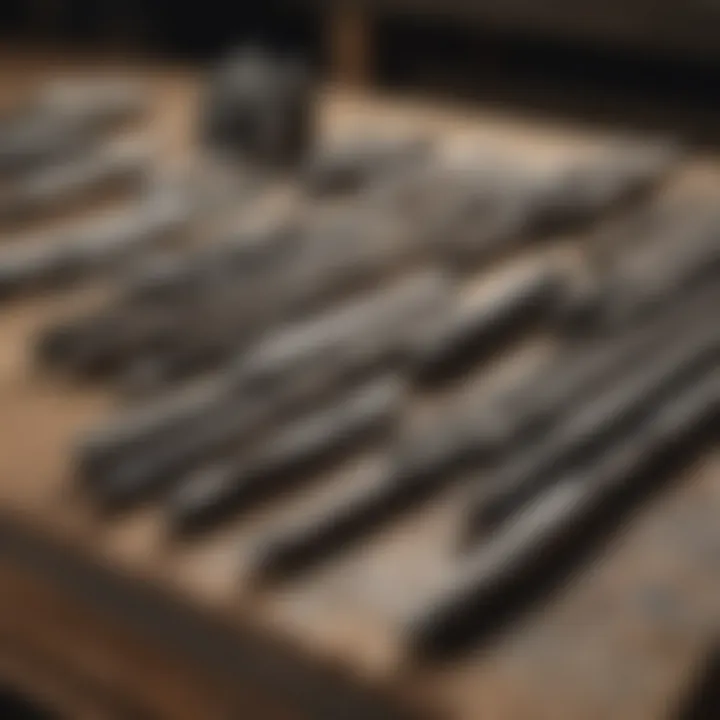
Quality Standards
Quality control is critical in the production of carbide rock chisels. Various industry standards ensure that chisels meet specific performance criteria. These standards often examine the hardness, toughness, and wear resistance of the chisels.
Manufacturers may use testing methods like Rockwell hardness testing to verify the hardness levels of their products. Additionally, wear tests help to gauge how well a chisel will perform over time under regular use.
In summary, the careful selection of materials, rigorous manufacturing processes, and adherence to quality standards result in high-performing carbide rock chisels suitable for a range of geological activities. Collectors and hobbyists should consider these aspects when selecting tools, as these factors directly impact their effectiveness and longevity in the field.
"Choosing the right carbide rock chisel is not just about brand, it is about understanding the materials and how they impact performance."
For further details on carbide composition and the material properties, resources like Wikipedia provide extensive insights.
Applications in Geology and Paleontology
The realm of geology and paleontology greatly benefits from the precision and durability of carbide rock chisels. Their special design makes them essential tools for professionals who engage in excavating and analyzing geological formations, as well as recovering fossils. In this article, we explore different aspects of this relationship, detailing specific techniques, methods of excavation, and the preservation of the delicate remains that tell stories of our planet's past.
Fieldwork Techniques
Fieldwork in geology and paleontology demands high levels of accuracy. Carbide rock chisels enable researchers to extract samples from hard substrates without causing damage. These chisels are meticulously designed to penetrate solid rock while maintaining a level of control that is essential for this delicate work.
The ability to create fine details in excavation is paramount. When collecting specimens, the use of carbide chisels minimizes risks associated with over-excavation or unintended breakage. Given the high tensile strength of carbide materials, these chisels withstand extreme conditions and provide the necessary leverage needed for effective drilling. This enhances the overall efficiency of field processing, allowing for more significant findings to be made in shorter periods.
Excavation Methods
Excavation methods utilizing carbide rock chisels have evolved into well-structured approaches, driven by the material's unique attributes. Some methods emphasize the chiseling action itself, while others involve the combination of chiseling with more advanced excavation techniques.
Professionals often adopt a staged approach:
- Initial Removal: Use carbide chisels for preliminary removal of surface layers.
- Detail Work: Transition to using chisels for intricate tasks involving fossils or geological samples.
- Assessment: Evaluate the site post-excavation to ensure no potential material has been overlooked.
Employing these carefully planned methods enhances not only the process but also the accuracy of the results. This is particularly important when working in environments where geological layers can provide critical insights into past climates or biological evolution.
Preservation of Fossils
When it comes to fossil recovery, preservation is a crucial aspect. Carbide rock chisels allow for the careful extraction of fossils with minimal disturbance to their surrounding matrix. Unlike traditional chisels, which can damage the matrix or the fossil itself, carbide chisels enable precise application of force. This precision is essential for maintaining the integrity of both the fossil and its context within the sedimentary layers.
The advancement in chisel technology has fostered a better understanding of -preservation techniques. Collectors and researchers must be informed of the potential consequences of poor extraction methods. Utilizing carbide rock chisels ensures higher success rates in bringing specimens to the laboratory without compromising their value. Therefore, modern excavation strategies focus increasingly on enhancing these preservation methodologies.
"The right tool makes a critical difference when uncovering the past."
In summary, the applications of carbide rock chisels in geology and paleontology are numerous and significant. Each aspect—from fieldwork techniques to preservation strategies—highlights the importance of using advanced tools to achieve meticulous results. Their effectiveness in both field conditions and controlled environments illustrates the integral role they play in scientific exploration.
Advantages of Using Carbide Rock Chisels
Carbide rock chisels stand out in the realm of geological tools, owing to multiple attributes that significantly enhance their utility for rock and fossil collectors. The advantages they offer can profoundly impact both the efficiency of work and the success of field operations. Understanding these advantages is key for anyone engaged in geological exploration and fossil excavation.
Durability and Longevity
Carbide rock chisels are celebrated for their exceptional durability. Made using tungsten carbide, a material that is known for its hardness, these chisels endure extreme wear and tear. Unlike traditional steel chisels, which can easily dull or chip during extensive use, carbide chisels maintain their sharp edge for extended periods. This longevity translates to less frequent replacements and lower overall costs for users in the long run.
Moreover, their resilience against harsh conditions makes them ideal for various geological environments. Whether in soft sedimentary layers or tough igneous rock, carbide chisels are up to the task, allowing users to focus on their excavation work without interruptions.
Efficiency and Precision
Efficiency is another hallmark of carbide rock chisels. Their sharpness allows for finer cuts and cleaner breaks, which is crucial when working with delicate fossils. A precise chisel enables users to make exact movements, significantly reduces the risk of damaging valuable specimens, and ensures the preservation of their integrity.
Additionally, the design of carbide chisels contributes to their efficiency. They are often lighter than traditional chisels, which reduces user fatigue during prolonged use. This ease of handling allows collectors to work longer without compromising accuracy or output. In demanding field situations, where time is of the essence, having tools that facilitate quick yet precise work is invaluable.
Versatility in Various Conditions
One of the most impressive features of carbide rock chisels is their versatility. They can be utilized across a wide range of rock types and geological conditions. From the fragile layers of shale to the dense granites, carbide chisels adapt well to different tasks. This flexibility is a considerable asset for paleontologists and collectors, as it allows for a single tool to address various needs.
Furthermore, these chisels often come in different shapes and sizes, catering to specific requirements of excavation. For example, pointed chisels can be used for detailed work in tight spaces, while flat chisels serve well for larger scale removal of materials. This adaptability not only saves collectors from needing a large assortment of tools, but also streamlines fieldwork.
"The combination of durability, efficiency, and versatility makes carbide rock chisels an essential tool for anyone serious about rock and fossil collection."
Maintenance of Carbide Rock Chisels
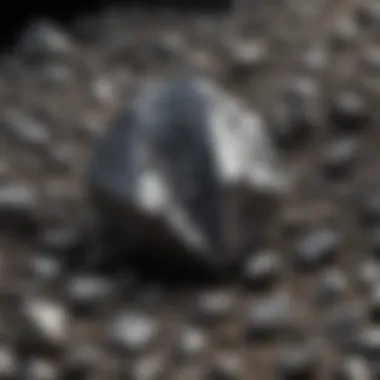
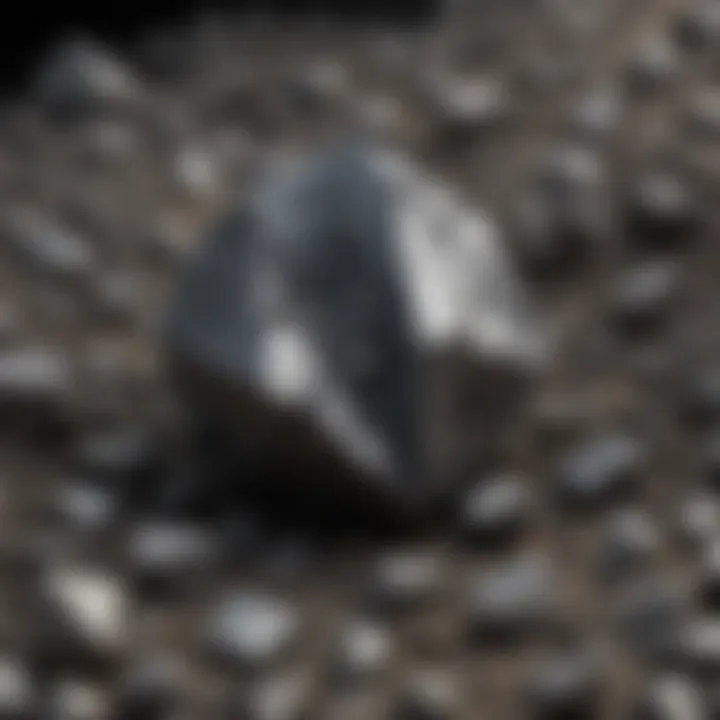
Maintaining carbide rock chisels is vital for ensuring their performance and longevity. Proper maintenance not only enhances the effectiveness of the tools but also reduces the risk of damage during use. When caretaking for these specialized chisels, users should be aware of a few key elements: cleaning, sharpening, and storage. Each component plays a critical role in keeping chisels in optimal condition for geological or paleontological work.
Cleaning Techniques
Cleaning carbide rock chisels is an essential practice that preserves their durability. After each use, it is advisable to remove any debris or buildup caused by chiseling into rock or fossil sites. A gentle wire brush can be employed to dislodge dirt without damaging the tool. Additionally, rinsing the chisels with water and wiping them dry helps to eliminate particles that could lead to rust or corrosion.
- Steps to Clean Chisels:
- Use a wire brush to scrub off loose debris.
- Rinse with clean water, ensuring all residues are washed away.
- Dry the chisels thoroughly with a soft cloth.
Cleaning regularly establishes a routine that can extend the life of your equipment.
Sharpening Practices
Keeping carbide chisels sharp is crucial for maintaining their cutting efficiency. A dull chisel can increase the risk of accidents and yield poor results in excavation work. The sharpening process should be handled with care. A diamond sharpening file or whetstone is commonly recommended for sharpening carbide edges. It is important to follow the manufacturer’s guidelines when performing this task.
- Sharpening Steps:
- Identify the angle required for sharpness as specified in the user manual.
- Using a diamond sharpening file, gently slide along the edge of the chisel.
- Check for uniformity in sharpness by running a fingernail along the edge; it should catch without difficulty.
Regular sharpening will enhance the efficiency and precision of the chisels during fieldwork.
Storage Guidelines
The way you store carbide rock chisels can determine their lifespan. Securing chisels in a dry environment is essential to prevent rust formation. Using a dedicated tool box or case with padding helps to keep chisels separated and makes it easier to transport them without damage. Avoid storing chisels in damp conditions, as moisture can be detrimental to their integrity.
- Storage Tips:
- Utilize a dedicated toolbox with soft padding for safe storage.
- Keep them in a dry area, away from direct moisture.
- Ensure chisels are organized to avoid chipping or damaging edges during transport.
Effective storage practices work with regular cleaning and sharpening to ensure chisels remain functional for all excavation needs.
Takeaway: Regular maintenance, including cleaning, sharpening, and proper storage, significantly enhances the longevity and performance of carbide rock chisels, making them invaluable tools for collectors and enthusiasts.
Safety Considerations
Safety is paramount when using carbide rock chisels for any fieldwork in geology or paleontology. The nature of this work often exposes collectors and enthusiasts to various risks, making it essential to prioritize personal safety as well as the safety of those around them. This section highlights key considerations surrounding protective equipment and best practices that can help mitigate risks while enhancing the overall experience during chiseling activities.
Protective Equipment
Utilizing the right protective equipment is crucial in ensuring safety. Tools like carbide rock chisels can pose hazards such as flying debris, sharp edges, and potential accidents when handling. Here is a list of recommended protective gear:
- Safety Goggles: Protect your eyes from debris and dust kicked up during chiseling. A strong pair of goggles can make a huge difference in preventing injuries.
- Gloves: Durable, cut-resistant gloves protect hands from sharp edges and help provide better grip on tools.
- Hard Hats: In areas where rocks may fall or if one is as a team, hard hats protect against head injuries.
- Steel-Toed Boots: These provide protection for feet against heavy falling objects as well as give a firm grip on various ground conditions.
- High-Visibility Vests: In situations with multiple workers or vehicles, wearing high-visibility gear ensures that others can see you easily.
Wearing these items is not just advisable; it's a necessity. Ignoring appropriate safety gear can lead to serious injuries.
Best Practices in the Field
Beyond personal protective equipment, understanding best practices is vital for promoting safety when using carbide rock chisels. Here are strategies to consider:
- Evaluate Surroundings: Before starting work, assess the environment to identify potential hazards like loose rocks, steep ledges, or unstable ground.
- Secure Your Workspace: Keeping the area clear of unnecessary obstacles helps minimize trip hazards, allowing for a safer working environment.
- Maintain Equipment: Ensure that chisels and other tools are in good condition. A damaged tool can malfunction and lead to accidents.
- Use Proper Techniques: Learn and practice the correct chiseling techniques. Poor technique can lead to loss of control and unintended consequences.
- Work in Pairs: Whenever possible, work with a partner. This ensures that assistance is available in case of emergencies.
Following these best practices can significantly reduce the likelihood of accidents and ensure a productive, enjoyable experience in the field.
In summary, safety is a critical aspect of working with carbide rock chisels. By using appropriate protective equipment and following best practices, collectors and hobbyists can enjoy their work while minimizing risks. Investing time and attention in safety measures not only protects the user but also enhances the operational efficiency of the chiseling process.
Comparative Analysis: Carbide vs. Traditional Chisels
The comparative analysis of carbide rock chisels versus traditional chisels is vital for understanding the enhancements offered by modern tools in geology and paleontology. This segment elucidates specific elements that not only showcase the technical superiority of carbide but also examines practical considerations for users. The relevance of this comparison is clear: selecting the right tool impacts the quality of work and efficiency in the field.
Material Properties
Material properties are the foundation for assessing the effectiveness of chisels. Carbide chisels are made from tungsten carbide or similar compounds, providing exceptional hardness and resistance to wear. This hardness translates to better performance through prolonged use. In contrast, traditional chisels, often made of high-carbon steel, are softer and can dull faster when used on hard rock.
The lack of longevity in traditional chisels results in more frequent sharpenings, which can lead to inconsistencies in work. Carbide chisels maintain their edge longer, ensuring that users can work more efficiently without constant interruptions. Furthermore, carbide chisels tend to be lighter, making them easier to handle during prolonged use in the field.
Cost-effectiveness
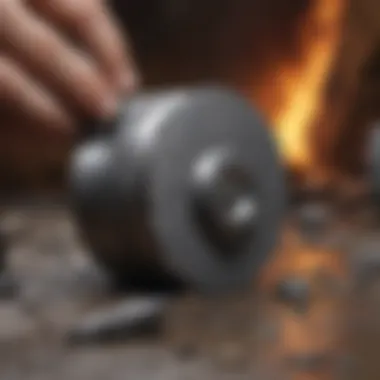

When evaluating cost-effectiveness, carbide chisels often present a higher initial investment compared to traditional tools. However, overall costs should be evaluated across lifespan and performance. Traditional chisels may seem cheaper at first but their frequent replacement and sharpening could ultimately lead to a higher total expenditure.
In the long run, carbide chisels tend to offer superior durability. Users report fewer replacements and reduced maintenance costs. Moreover, the efficiency gained from using a carbide chisel can lead to increased productivity, which can offset the initial costs. Therefore, when factoring in both performance and longevity, carbide chisels can prove to be more cost-effective over time.
User Experiences
User experiences reflect practical insights that enhance understanding of these tools. Many users report satisfaction with the performance of carbide chisels, noting their ability to penetrate tough rock formations easily. Experiences indicate that they require less effort and fewer strokes to achieve desired results. This efficiency not only benefits larger excavation projects but also minimizes fatigue for collectors and paleontologists alike.
Conversely, traditional chisels sometimes result in frustrations due to the frequent need for sharpening and potential breakage under heavy use. Users have also commented on how working with traditional chisels often demands greater skill and experience. Given the varying feedback, the choice of chiseling tools significantly influences not just results, but also the overall user experience in geological explorations.
"The right tool can make or break an experience in the field; carbide chisels have transformed how I work with rock and fossil specimens." - A seasoned collector
Users are encouraged to understand their specific needs and contexts, as these insights can inform their tool choices effectively.
Future Advancements in Chiseling Technology
The area of chiseling technology continues to evolve, shaped by innovations that enhance performance, efficiency, and safety. Focusing on advancements in carbide rock chisels highlights the significance of investing in modern solutions for collectors and professionals alike. This section discusses specific trends in research and development and examines material innovations that will likely impact the future landscape of chiseling tools.
Research and Development Trends
Research in chiseling technology is increasingly driven by the demand for enhanced durability and precision. Recent studies indicate that continuous improvements in carbide formulations are pivotal. Engineers are experimenting with various alloy compositions to optimize the hardness and toughness of carbide. This research points towards a future where chisels not only withstand wear better but also maintain sharpness longer.
Focusing on user feedback has fostered advancements that directly address practical challenges faced by collectors and professionals in the field. For example, ergonomic designs that reduce fatigue during long excavations are becoming more common. As companies gather user data, they can identify areas for improvement, such as weight distribution and grip texture.
Additionally, the integration of computer-aided design (CAD) technology allows for rapid prototyping of chisels. This promotes innovation by enabling rapid iterations based on testing results. The ability to quickly refine designs based on real-world use can drastically shorten the time from concept to market.
Innovations in Materials
The future of carbide rock chisels is closely tied to developments in material science. One significant trend is the focus on hybrid materials that blend traditional carbide with advanced polymers or composites. These materials can potentially reduce weight without compromising strength, making chisels easier to handle while increasing efficiency.
Another area of innovation involves coatings. Researchers are exploring advanced ceramic coatings that can improve wear resistance and minimize friction. These coatings may allow chisels to cut through harder rock types more efficiently while extending the life of the tool.
The use of 3D printing technology is gaining traction as well. By utilizing 3D printed components, manufacturers can customize chisels based on specific user requirements or geological conditions, enhancing versatility. This customization enables collectors and professionals to obtain tools that better suit their specific needs.
“Investments in material science and technology could revolutionize the performance of chiseling tools, making them more effective in a wider range of applications.”
In closing, the advancements in chiseling technology are essential for improving the experience of rock and fossil collectors. By emphasizing research and development along with innovative material solutions, the future of carbide rock chisels looks promising, with the potential to redefine standards in durability and efficiency.
Case Studies in Carbide Chisel Applications
The exploration of carbide rock chisels in practical scenarios provides valuable insights into their efficacy and versatility. These case studies not only highlight successful fossil discoveries but also document challenges encountered during use. Such analyses are important for understanding the strengths and weaknesses of carbides within different geological contexts. It serves to educate both professionals and enthusiasts about best practices and considerations pertinent to the use of these tools.
Successful Fossil Discoveries
Numerous paleontologists and rock collectors have reported significant successes by employing carbide rock chisels. One notable case involved the excavation of a nearly complete dinosaur skeleton in Utah. The researchers utilized carbide chisels for precise extraction of fossilized bones from surrounding rock. The sharpness and durability of the chisels allowed for intricate work around fragile fossils, minimizing damage and ensuring preservation.
In another instance, a team working in Montana discovered an unprecedented fossil site rich in marine life. Carbide chisels facilitated effective carving through hard sedimentary layers, enabling the team to uncover well-preserved specimens. The efficiency of these chisels significantly reduced the time needed for excavation, allowing for a more detailed analysis of the finds. Such case studies not only demonstrate the practical advantages of carbide chisels but also illustrate the potential for groundbreaking discoveries in paleontology.
Challenges Encountered
While carbide chisel applications yield significant advantages, they also present challenges. The increased hardness of carbide can lead to issues when working with certain rock types. For example, during a fossil retrieval project in South Dakota, a team faced difficulties breaking through dense granite. The chisels, while effective against softer materials, did not yield the desired results without additional techniques.
Moreover, users sometimes report that improperly used carbide chisels can lead to damage. Cases illustrate that when novices attempt to use these tools without adequate training, it can result in unintentional breakage of fossils. The need for proper technique is crucial; understanding how to apply the right amount of pressure can determine the success or failure of a project.
"Carbide chisels are powerful tools, but they require respect and understanding to avoid unintended consequences."
The End
In this article, we have elucidated the multifaceted nature of carbide rock chisels, detailing their construction and practical applications for both amateurs and professionals in geology and paleontology. The unique properties of carbide make these tools not only effective but also essential in modern collecting and excavation work. The insights derived from our examination position carbide chisels as crucial instruments for anyone engaging in fieldwork, emphasizing the interplay between material science and practical utility.
Summary of Insights
Throughout our exploration of carbide rock chisels, several key insights have emerged:
- Material Superiority: The unique composition of carbide offers durability and longevity compared to traditional chiseling materials. This advantage translates to less frequent replacements and greater cost savings in the long run.
- Versatile Applications: The utility of carbide rock chisels extends to various geological contexts, allowing for precise excavation without the risk of damaging surrounding materials, including fossils.
- Essential Maintenance: Proper care—including cleaning and sharpening—is vital to maintain performance. Understanding this process not only prolongs the tool's life, but also enhances efficiency during fieldwork.
By summarizing these insights, we underline how an informed approach to using carbide rock chisels can significantly impact one's outcomes in geological endeavors.
Future Directions for Enthusiasts
As we look ahead, several exciting possibilities and innovations beckon for enthusiasts of carbide chiseling.
- Emerging Technologies: Ongoing advancements in material sciences may yield even more effective chisel designs, optimizing performance for specific applications in geological research and excavation.
- Community Engagement: As forums like Reddit and Facebook continue to facilitate discussions among rock and fossil collectors, sharing experiences and best practices will further enhance tool usage and safety measures.
- Educational Resources: Future efforts could focus on structured learning opportunities, such as workshops centered around intricate chiseling techniques, fostering a deeper connection to geology for new collectors.
In summary, the journey into the world of carbide rock chisels does not end with the knowledge shared in this article. The combination of proper practices and future innovations forms a solid foundation for sustained interest and development in this field. Enthusiasts and professionals alike can look forward to a dynamic evolution in tools and techniques that will elevate their experiences in geological exploration.



